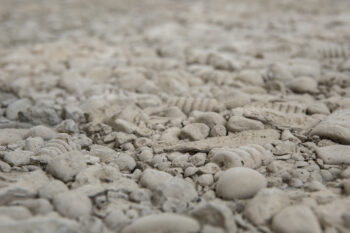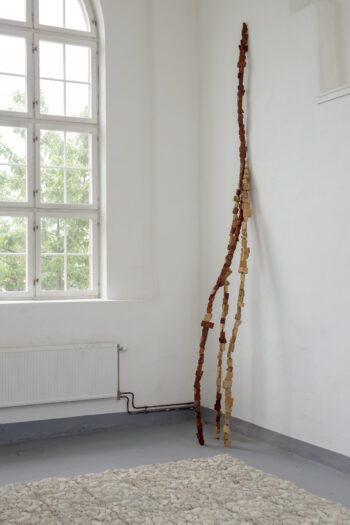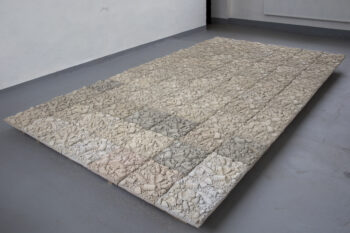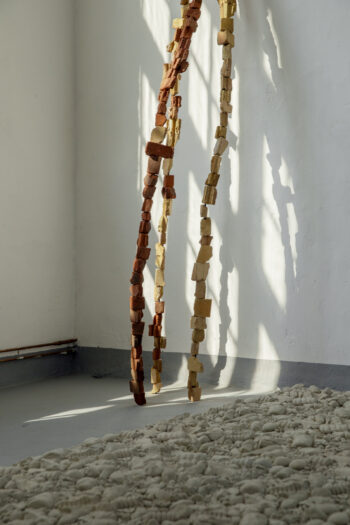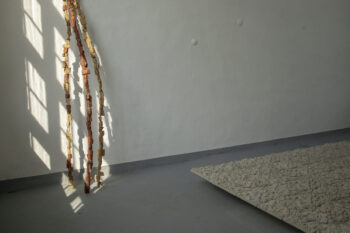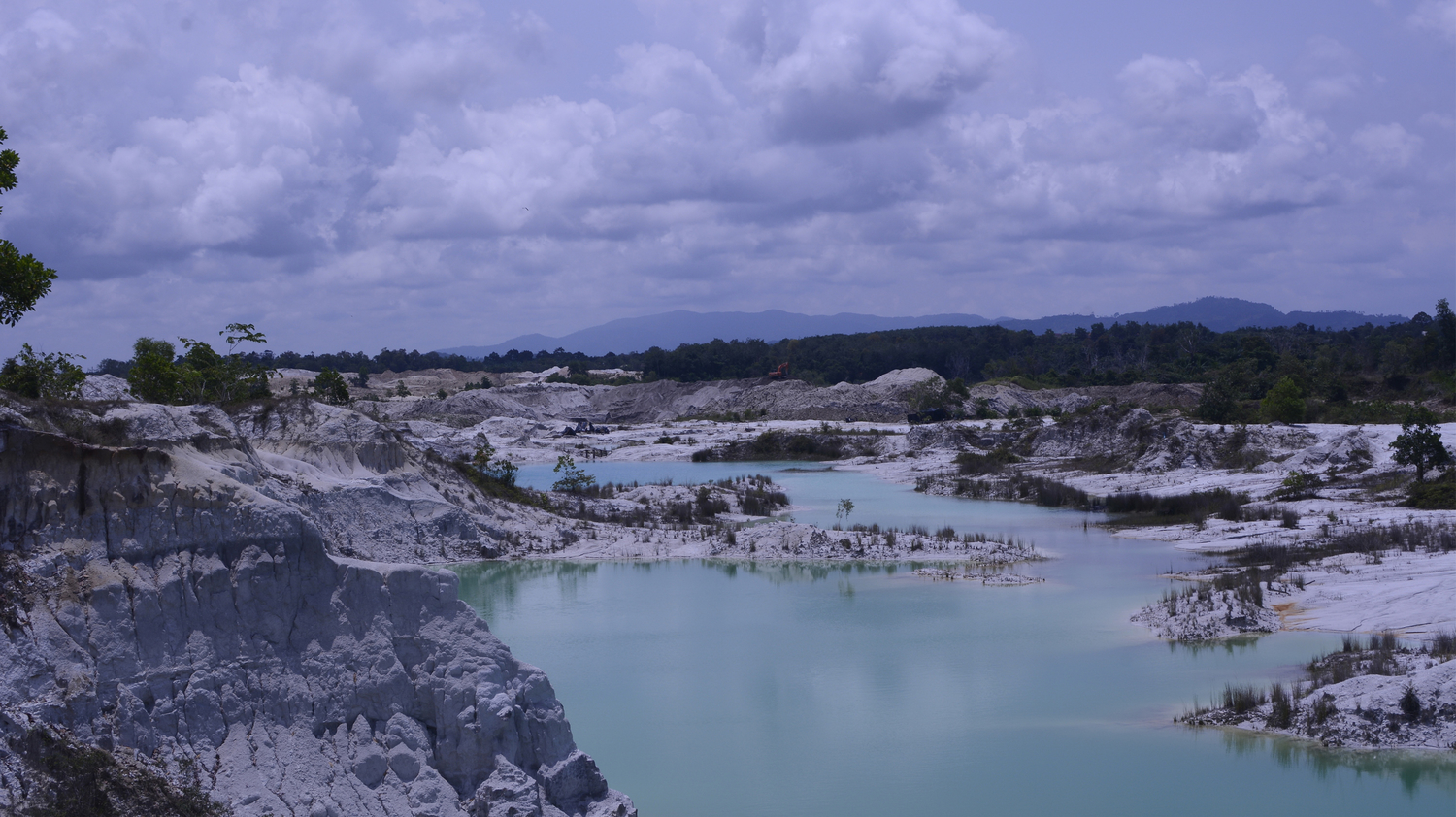
Photo: Film still from Kasiterit by Riar Rizaldi, 2019
Sara Söderberg and Riar Rizaldi
19/3-12/6 2022
Gotland and Bangka Island off Sumatra in Indonesia share, in addition to being islands, also the role of being mining sites for materials on which global industry depends. One third of the world’s tin mining takes place in Bangka: tin is crucial for the development of, for example, artificial intelligence and renewable energy. In Gotland, a battle has been going on for some time regarding the ecological consequences of limestone mining for cement and concrete production, which has led the Swedish government to act.
From limestone to cement and back travels Teknofossil (2020)by Sara Söderberg, an installation that fills the large exhibition hall and is best experienced barefoot. The work connects us with the 450 million year old fossils that are now irreversibly dissolved and through the concrete transformed into homogeneous buildings in the modern world. In the work Löst material (2022), the artist has stacked old brick remains from Sweden’s last, now disused, brickwork in a spine-like construction. In Riar Rizaldi’s video work Kasiterit (2019), we meet the narrator Natasha – a solar-powered AI voice – and approach her origins through a kind of genealogy. Here we are guided through the emergence of tin mining on Bangka through natural anthropological, geopolitical and value-theoretical perspectives.
Ecofeminist Val Plumwood has called places like these shadowy places. Through global capitalism, they have been involved in building bodies and lives far away from their geographical locations, and are thus places of shared responsibility. What does it mean to keep in touch with the origins behind the everyday materials that enable a high-tech society? And at the same time take responsibility for the impact these extraction processes have on people’s and other life forms’ labor and agencies?
Welcome to an exhibition that reflects on the relationship between tin and limestone to deep time, contemporary bodies and a possible future of new care.
The exhibition is open Saturdays and Sundays from 12-16. The exhibition is closed April 16-17, April 30, May 1, May 28-29.
